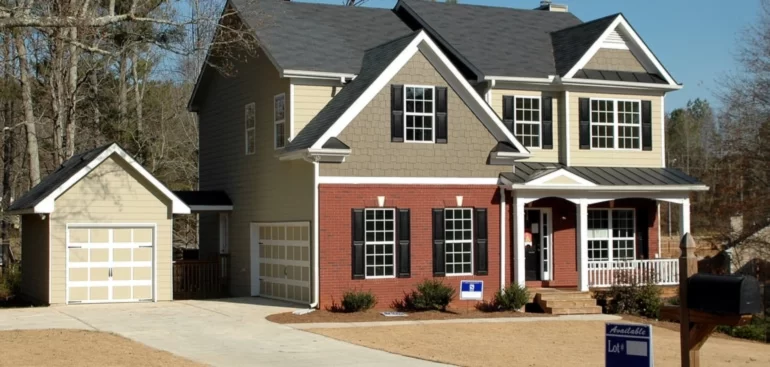Price growth has slowed (and in some cases reversed) in several parts of the country due to the confluence of multiple market forces. Overall, gains have remained strong, with the March 2022 increase being the largest on record, as per CoreLogic.
In March, CoreLogic’s Home Price Index (HPI) increased by 20.9 percent year over year, the biggest annualized gain since tracking began in 1976. This year’s rise was 9.8 percentage points more than the increase in March 2021.
Numerous cities continue to see significant price increases, with Tampa (32.5 percent) and Phoenix (30.4 percent) having the highest year-over-year increases among the country’s 20 largest metros. The states with the highest annualized home-price gains were Florida (31.4%) and Arizona (28.7%).
CoreLogic forecasts price growth to decrease in the coming year due to critical problems, including rising rates. Nonetheless, the company’s HPI estimate is for double-digit annualized growth for the rest of the year.
Residential Building Continues to Dominate Construction Spending
In March, residential construction spending increased by double digits, pushing total construction spending ahead of its 2021 pace. According to the US Census Bureau, total construction investment increased by 0.1 percent in March to $1.731 trillion, up 11.7 percent yearly. In the first three months of 2022, $376.337 billion has been spent, representing a 12.0% increase over the same period last year.
From February to March, private sector spending grew 0.2 percent to $1.380 trillion on an annual basis. The residential portion of that spending increased by 1.0 percent in March, compared to 0.7 percent in February. The yearly rate was $88.045 billion, rising 18.4 percent from March 2021. Although the non-residential component declined 1.2 percent from the previous month, it is still 8.5 percent higher than in March 2021.
According to Na Zhao of the National Association of Home Builders (NAHB), new single-family construction accounted for $472.6 billion in monthly residential investment, up 1.3 percent from February and 18.5 percent year over year, while multifamily spending fell 0.5 percent. Home improvement spending increased by 1.1 percent for the month.
Mortgage Rates Are Rising, But the Hot Housing Market Is Slow to Cool
The Federal Reserve is poised to raise interest rates by a half-percentage point on Wednesday, the most in more than two decades, as it tries to combat the highest inflation in 40 years and calm a housing market that the pandemic has fueled.
Experts think the housing market has a long way to go before it returns to normal. Real estate agents, buyers, and housing specialists have seen a slight slowdown, but the market is still moving. For example, a seller may only receive ten offers instead of 20. The Federal Reserve’s efforts to raise interest rates and shrink its massive balance sheet have already driven the 30-year fixed-rate mortgage average past 5%, up from 2.98 percent a year ago. Even while the market is still hot, higher mortgage rates are causing some symptoms of cooling. The Fed’s capabilities are limited as it attempts to stabilize the housing market. Zoning regulations and building costs have made it more difficult for builders to meet demand, which supply chain challenges and labor shortages have exacerbated.
“As housing costs continue to increase, housing will likely become an ever-larger share of household budgets,” Fed Governor Christopher J. Waller said in a March speech. “I will be looking even more closely at real estate to judge the appropriate stance of monetary policy.”
The Fed Interest Rate Decision
On Wednesday, the Fed raised the Fed Funds Rate (the rate the government charges banks for overnight loans) by ½%. This increase was in line with economist and investor expectations, but the stock market rallied on the post-meeting comments made by Fed Chair Jerome Powell.
Although the Fed is committed to taming inflation, Powell delivered a softer tone about future interest rate increases. Investors had feared that the Fed was considering raising rates aggressively in the future with a possible ¾% rate increase at one of the next two meetings. However, Powell quelled those concerns, indicating that a 75 basis point rate increase is not even under consideration at this time.
Next week’s potential market-moving reports are:
- Monday, May 9th – Wholesale Inventories
- Tuesday, May 10th – Small Business Index, Real Household Debt
- Wednesday, May 11th – Core CPI, Federal Budget
- Thursday, May 12th – Initial Jobless Claims, Continuing Jobless Claims, Producer Price Index
- Friday, May 13th – Consumer Sentiment Index, 5-year Inflation Expectations
As your mortgage and real estate professional, I am happy to assist you with any information you may need regarding mortgage or real estate trends. I welcome the opportunity to serve you in any way I possibly can. Please feel free to reach me at (800) 216-1047.
Resource – https://www.spokesman.com/stories/2022/may/03/mortgage-rates-are-rising-but-the-hot-housing-mark/



